Why monitoring cultural differences is a must for global brands
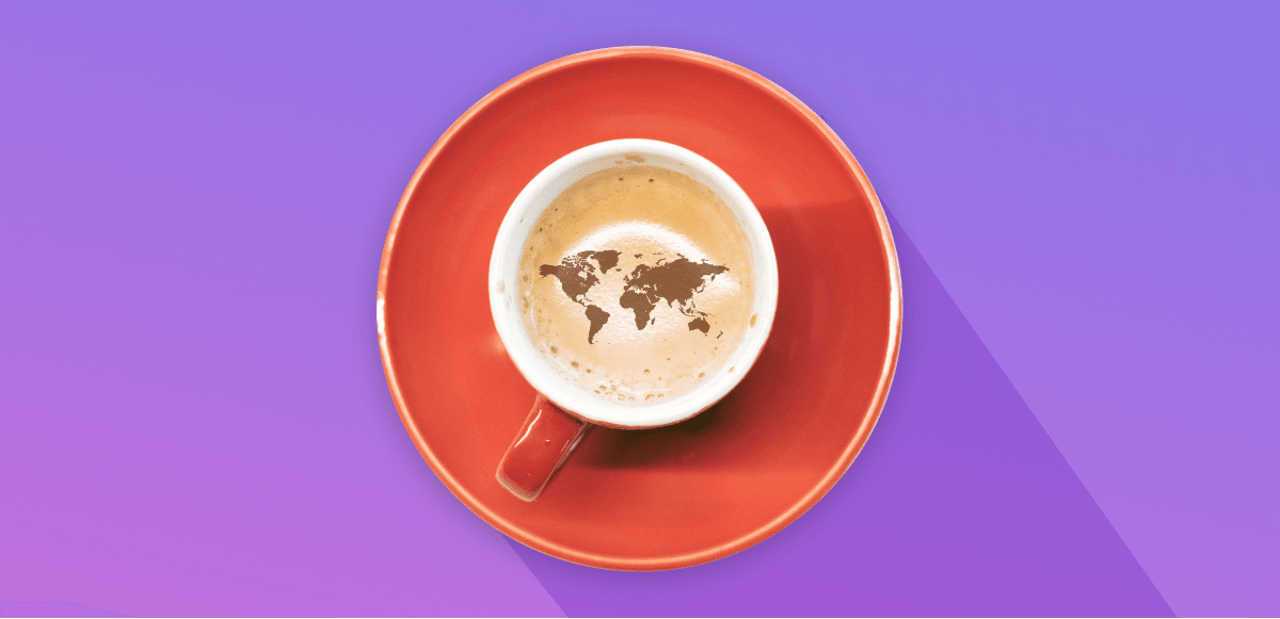
To be a truly global brand, it's not enough to simply make your products or services available for sale in different parts of the world. Modern consumers can have their pick of goods in fulfilling any need - from streaming services and video games to food and beverage and beauty brands. And as such, they gravitate toward companies that can show their high level of investment in their audience.
So, how can a company show their investment in a new audience? First, starting localization work early in the marketing department: invest in a social media monitoring tool to simplify the cultural insights search. This can help your company outline a culturally-informed, respectful marketing strategy for expansion that considers region-specific language, customs and other important cultural insights.
In this article, we will go over what these insights are, how they can set you up for global success and avoid marketing blunders, and how YouScan's powerful social media listening tools can aid your company in acquiring these insights.
What are cultural insights and why they matter
Cultural insights consist of qualitative information about groups of people living in a distinct geographical area. They include but are not limited to: language and vernacular, naming conventions, cultural customs and practices, and everyday habits.
An example of one cultural insight that applies to several countries around the world is that elders and people in positions of power are not commonly referred to by their first name, as doing so is considered disrespectful toward the individual. Similarly, many languages have dedicated pronouns for people in positions of power and strangers.
This information is easily accessible online in our all-connected world, where people readily share the most minute details of their lives on social media and other public forums. While easily accessible, these insights often hide in plain sight - and require dedicated research efforts to reveal. This is when a well-calculated localization marketing strategy and a good social media listening tool are needed.
Nowadays, consumers expect a brand to stand for something - a recent survey found that in the U.S., both adults and Gen Z consumers are more likely to research a brand's values than six months earlier. You could say 2020 was the year of value-informed marketing: value alignment was reported as an important consideration by 71% of consumers as early as last February.
Where does value alignment fit in with cultural insights? For one, it helps your brand's global reputation and trust to have culturally sensitive marketing in every region with a presence. Cultural sensitivity also helps foster a stronger bond with your consumers in a new market, and provide a strong argument in favor of choosing your brand - maybe even over some local competitors!
The case for quality cultural insights
The quality of information about a specific region's language and customs can make or break your localization efforts. This is why many experts recommend focusing on a so-called glocal strategy. A portmanteau of "global" and "local," glocal brands work with internal and external stakeholders on global and local level to boast a unified brand idea and messaging, while remaining flexible and attentive with their region-specific marketing efforts.
It's important to point out that localization does not equal translation: while certain parts of your value offer can be translated into the regional dialect, this should never be done without considering the specifics of each language.
We don't have to look further than the infamous example of the "Got Milk?" campaign from the U.S. dairy producers in the 1990s - the slogan which, when translated to Spanish during the campaign's expansion to Mexico, produced a very different kind of question.
The same "localization, not translation" principle applies to cultural norms, retail locations, and interior design. Swedish furniture giant IKEA is an example of the benefits of getting those cultural insights early on in the localization process. Thanks to thorough research before the brand's expansion to China, for instance, IKEA was able to position the brand in a way that's mindful of the way local consumers shop, commute and design their spaces.
For example, IKEA stores are located closer to commuter train stations in China, in contrast to North America's highway-adjacent suburban areas. IKEA display models also reflect regional differences in China, where floor models of balcony furniture reflect the common use for the area for storage in one region and laundry in another.
In today's global connected society, it's not enough to simply avoid translation blunders. Brands that adopt the "glocal" ideology go beyond translation, and include regional and cultural references in their localization efforts.
A great illustration of this is the Coca-Cola Company's "Share a Coke" campaign. While in its North American and European markets, Coca Cola opted for including common first names in each region, in China, where young people use unique symbol-based codes in their online interactions, the local Coca-Cola brand opted to include those symbols on the label design. This helped Coca-Cola stand out in China's incredibly competitive soft drink market, which boasts many big local brands.
Another important use case for cultural insights has to do with online platforms. Certain social media tools, such as Twitter and TikTok, currently enjoy popularity worldwide - however, many regions also have their own social media tools - like VK in Russia or Weibo in China - that should not be overlooked when considering your marketing efforts in those regions.
For example, Starbucks had a targeted campaign for Weibo users in China as part of its localization efforts in order to reach users of this highly popular social network. Your brand's marketing specialists should have a good idea of their new audience's online habits. Whatever social media listening tools are at your disposal, it would be prudent to make sure they have access to a variety of online sources.
How social media listening with YouScan reveals cultural insights
At this point, you might be racking your brain about how one could possibly learn all these cultural insights, short of an anthropological trip to the new country? Thankfully, there is no need to book extra travel yet, as much of this information exists and is publicly available on the internet. All you need is a good social media listening tool - like YouScan!
In this article, we'll use the example of a product with nearly universal appeal: coffee. There are coffee drinkers in most nations around the world, but the demographics of these consumers, how they like their coffee prepared, as well as where and when they get it varies greatly from country to country.


Regional preferences and habits
First and foremost, there is a regional difference in the consumption method: countries like the United States prefer freshly ground coffee, while places like Russia or Indonesia give preference to instant coffee. This fact gives rise to one of the key cultural differences: the setting where people drink coffee.
Using YouScan's image analysis feature, Visual Insights, we are able to collect user-generated photo content from around the world related to coffee. Very quickly, certain trends become apparent.
For example, most coffee beverages appearing in online feeds from Russia are consumed at home. Coffee is seen in ceramic mugs or specialized glasses set on tablecloths. Notably, the majority of beverages have added lightener or dairy, with very few photos featuring black coffee.
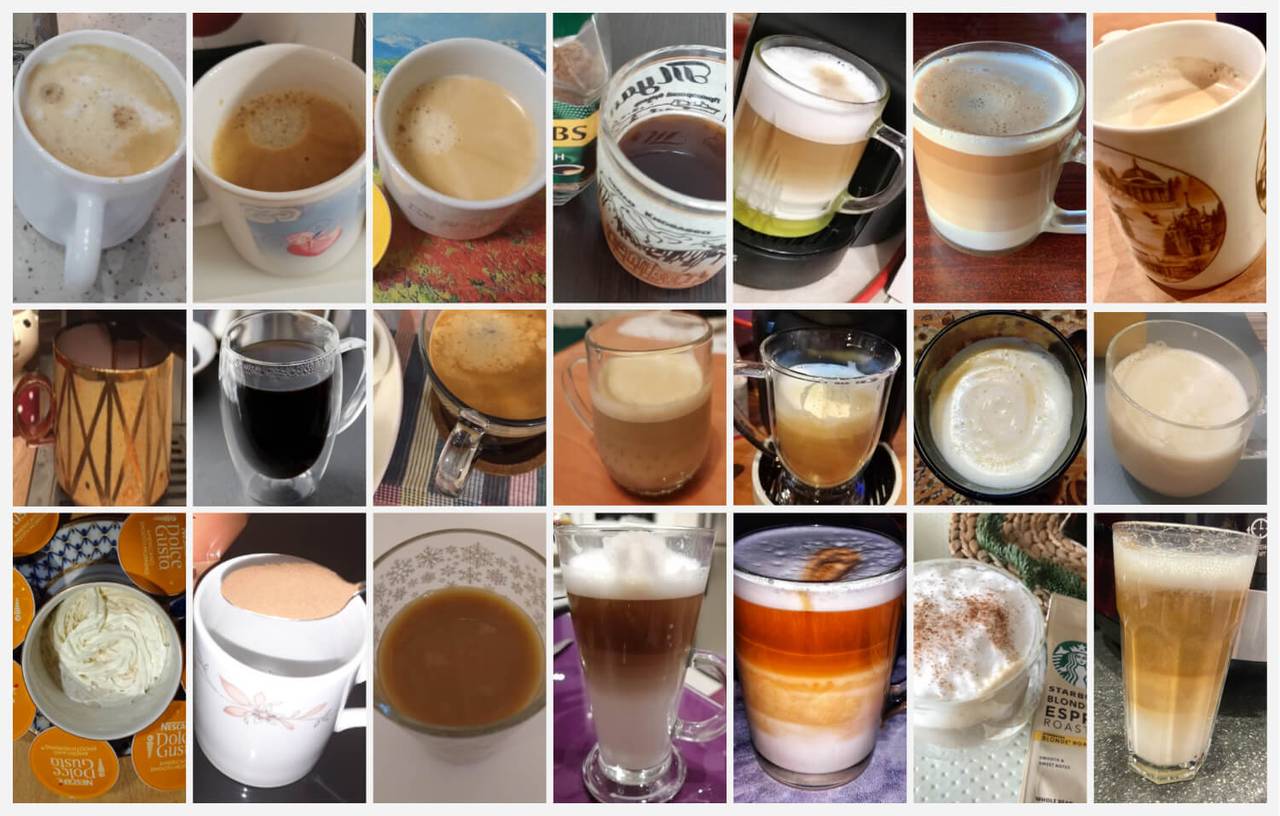

Equipped with these cultural insights, we could recommend a coffee brand considering an expansion into Russia to focus on an instant coffee product, or a product that could become part of a brewing ritual at home. Our hypothetical brand could also focus on coffee-adjacent products, such as a lightener or a creamer, since coffee drinkers in Russia seem to prefer their coffee with milk or cream.
Unlike visual content from Russia, Visual Insights results in the U.S. are mainly set outside the home. In user-generated photos of coffee collected by YouScan from the U.S., caffeinated beverages are mainly seen in disposable containers or to-go cups, and pictured in cars or in coffee trays, indicating that U.S. coffee enthusiasts prefer their java on the go. More iced coffee beverages are featured among U.S. content than Russian content.


In accordance with these results, the advice to our hypothetical coffee brand in the U.S. would be to focus on retail locations in populated places, such as shopping plazas or office buildings, for convenience of consumers who take their coffee to go. A drive-thru option may be necessary for car commuters. Finally, YouScan's cultural insights inform us that it would be good to offer both hot and iced coffee drinks to the U.S. consumer, as they enjoy coffee both ways.
Travelling across the world again, let's take a look at the South Asian audience: India and Pakistan. In India, as evidenced by public online posts collected with YouScan, people like to drink coffee at home, but get creative with their beverage: there are a lot of posts of recipes for how to make lattes or cappuccinos, as well as tips for latte art.
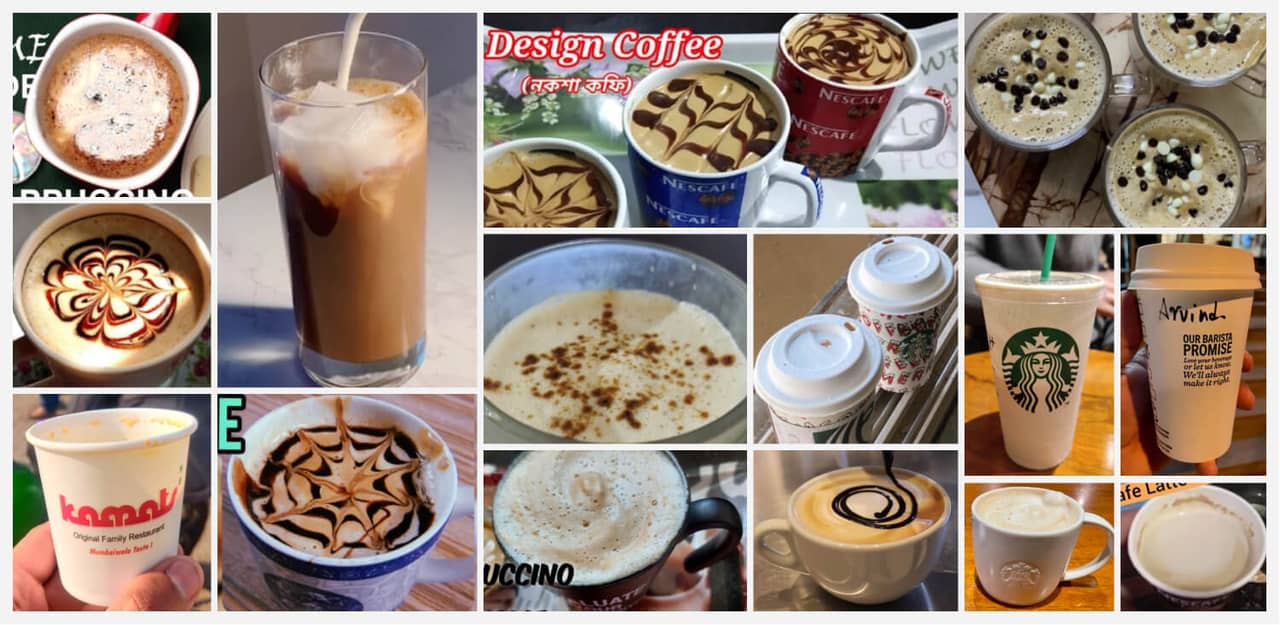

Similarly, in Pakistan, people also shared DIY latte art tips and photos of coffee beverages from home. In both regions, flavour additives like cocoa and cardamom have also featured heavily.
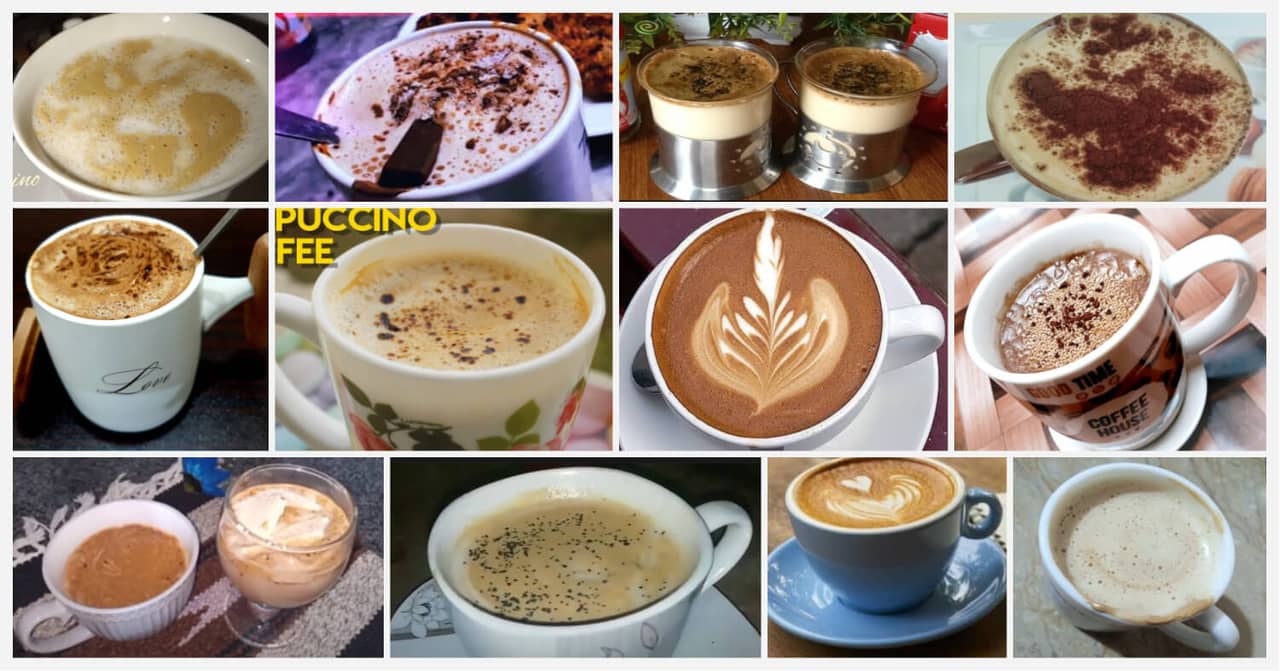

Based on cultural insights from South Asia, yet again, our recommendations to the hypothetical coffee brand are unique to Indian and Pakistan. Here, we would suggest investing in a product that offers a way to make coffee beverages at home, such as a latte or cappuccino kit. Our potential client may also want to consider flavoured products to reflect the regional preferences for different spices.
Let's review how social media listening informed our strategies for different regions: By studying public user-generated content from each region, we were able to differentiate the setting where the product is consumed, the form in which it's consumed, and frequently accompanying associated products. We gained all these cultural insights with the help of YouScan's visual image analysis. Many of these are echoed in consumer trend reports on coffee - but ours took less time to get! And when you're considering an expansion into a different region, expediency matters.
Consumer demographics
Depending on your products or services, the consumer demographics for your offering may vary from one region to another. Returning to our coffee example: in the U.S., there are nearly as many avid coffee drinkers in the 60+ category as there are in the 18-24 age group; but in the U.K., the biggest coffee enthusiasts are those over the age of 70; while in Russia, Millennials are the biggest coffee lovers.
You can see many of these trends reflected on social media, where the age groups that most actively post about coffee in each region are also some of the most active consumers of the product in that region. Naturally, we have to keep in mind that not everyone uses social media, so it's also an important consideration for ad placement when you're planning to market to a specific demographic.
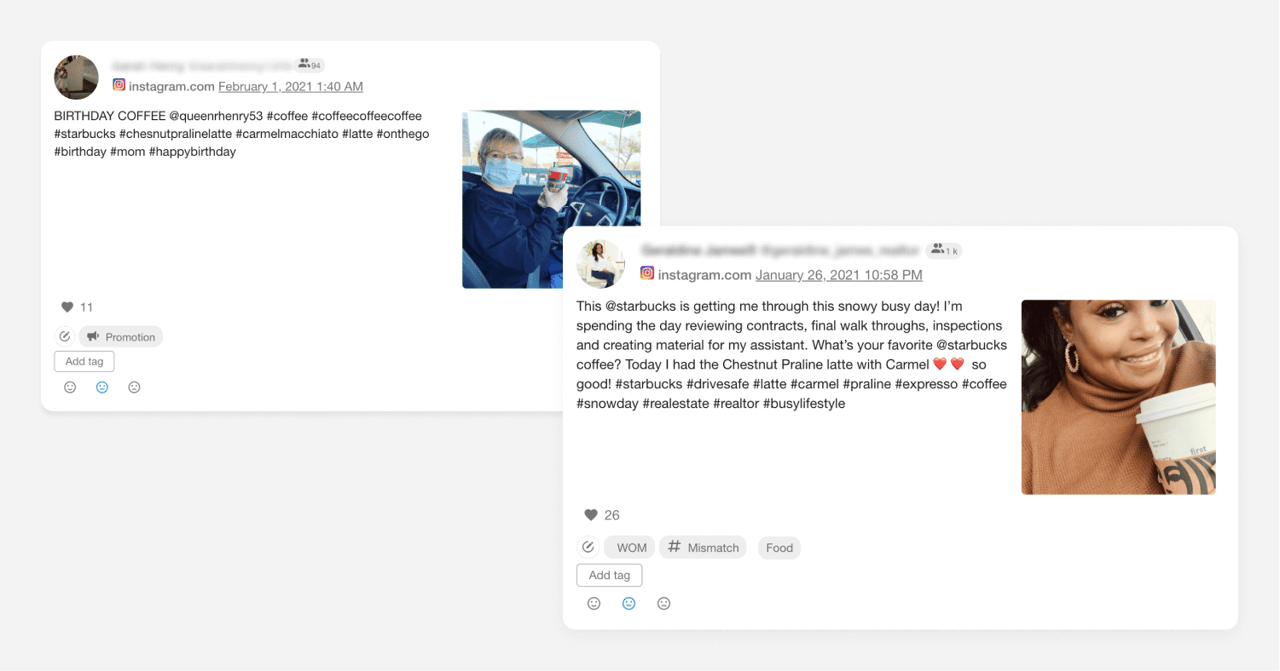

Once you know which age group offers the biggest opportunity for the expansion of your product into a specific region, you can use social media monitoring to learn which social networks they prefer, in order to reach them there.
Depending on your target demographic, you might be able to drill further into lifestyle differences and how to use those types of cultural insights to inform your marketing campaigns. For example, if your target demographic is 18-24-year-olds, you will want to consider how your product - in our example, coffee - can best fit into their lifestyle. Perhaps it can be used as fuel for study sessions and friendly get-togethers - then, your advertising efforts should reflect that.
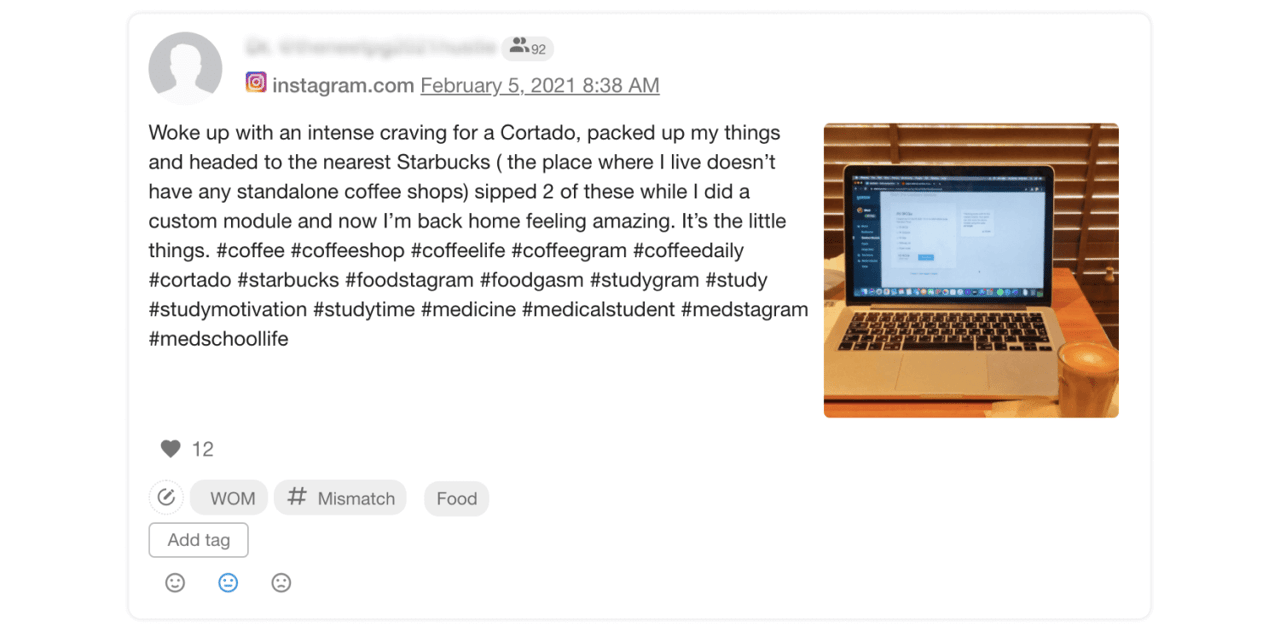

If you're catering to an older demographic of 25-40-year-olds, maybe your ads would be centered around coffee shops as coworking spaces, or an aide for young parents on the go.


Your social media monitoring efforts can unearth unexpected results - like a subgroup of dog owners who like to bring their pup along to the coffee shop and give them a treat. Take note of the surprising cultural insights you encounter, because this might be the knowledge that helps you take over the competitors! Perhaps a separate product line for dog treats can be offered at the checkout of your retail locations.
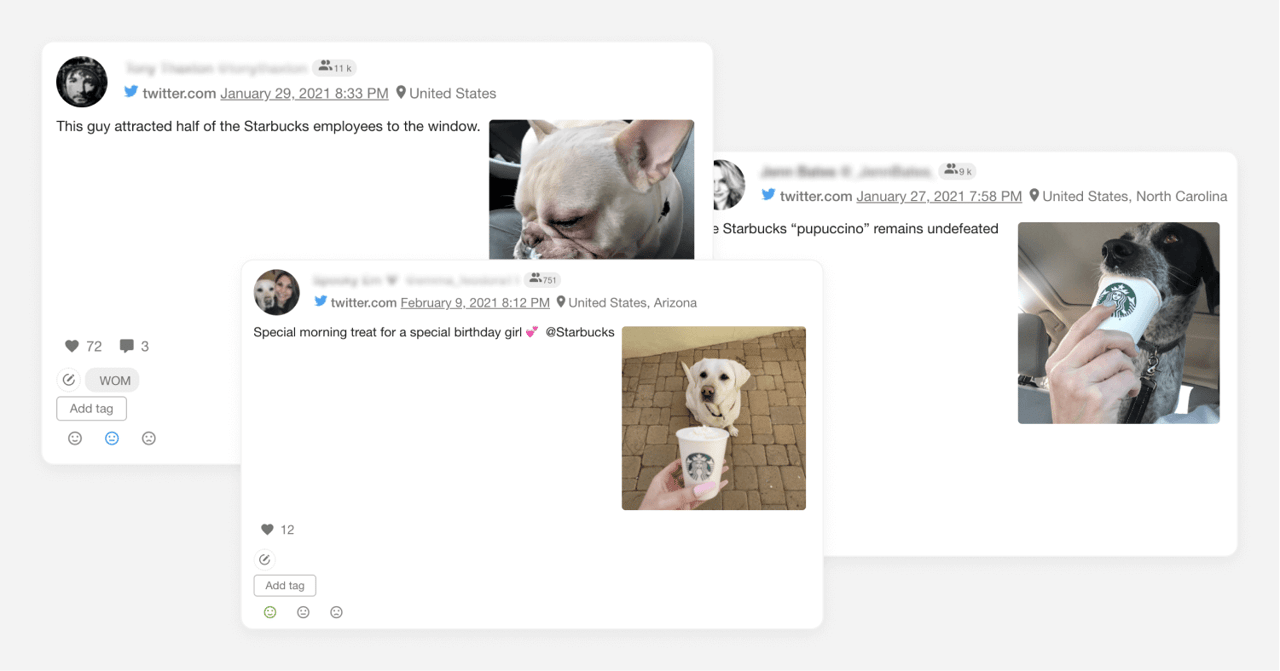

Brand recognition and competition
Finally, it's important to know the lay of the land in your desired region of expansion: Who are the major players in your industry? Does the industry mainly consist of a few international brands or many independent businesses? What is the perception of these competitor brands?
If you're examining social media images in your quest of cultural insights, make note of the logos and other branded assets you encounter most frequently. In our coffee example, we can clearly see that the first brand that comes up when you talk of coffee in the U.S. is Starbucks.
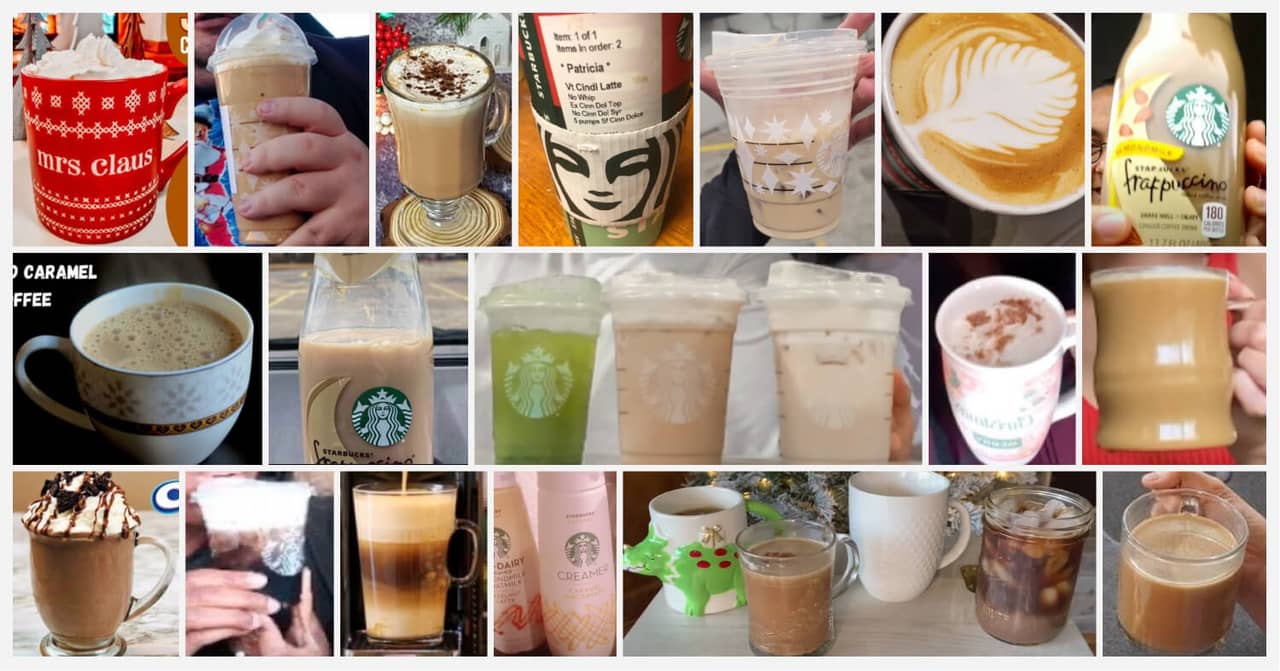

When you have identified your competitors, it's helpful to do a sentiment analysis of the posts around the brand. What is the prevalent tone people use when talking about the brand? Is there a gap that your brand can bridge? A social media monitoring tool like YouScan can conduct sentiment analysis of the entire topic (a competitor brand, for example), as well as a sentiment analysis by aspect, or different characteristics or traits of a product or brand. This kind of intelligence can help you figure out where you can outwit the competition.
Perceptions of a major brand can also help you learn more about the consumers in a specific region. For example, consumers of Starbucks in India are quite different from the ones in the U.S., even though Starbucks shows up in many UGC photos in that region as well. Whereas in the States, people pick up Starbucks as a daily habit, in many parts of India a visit to the coffee shop is a special occasion, and can be a status symbol.

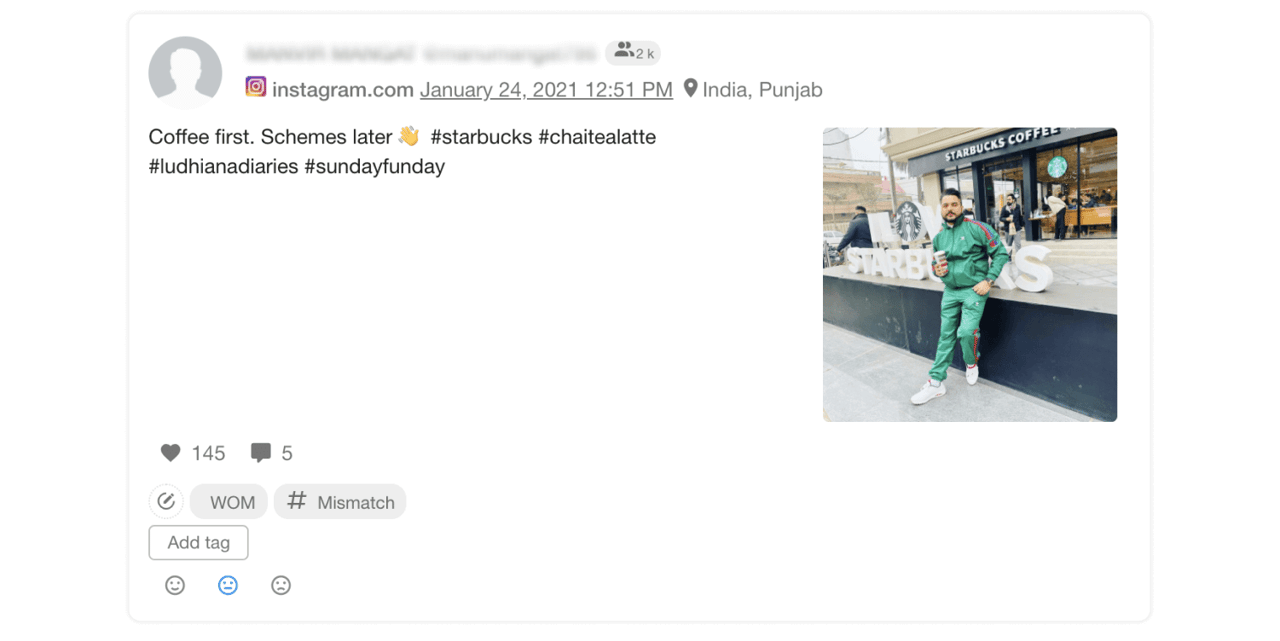
Knowing what kind of social value is assigned to a brand or product in a region can help your message reach the right audience.
In summary…
A quality localization strategy needs to be informed with cultural insights from the desired region for expansion. Cultural insights include language, customs and habits shared by consumers in a specific demographic or geographic region. Robust social media listening tools like YouScan can help brands gain cultural insights by analyzing visual user-generated content, top online sources, and influencers in a given region or topic of interest, among other things.
Is a better localization strategy on your 2021 resolution list? Valuable cultural insights are waiting for you - start collecting them with YouScan today! Sign up for a free demo.


-1721912988.png)

.png)